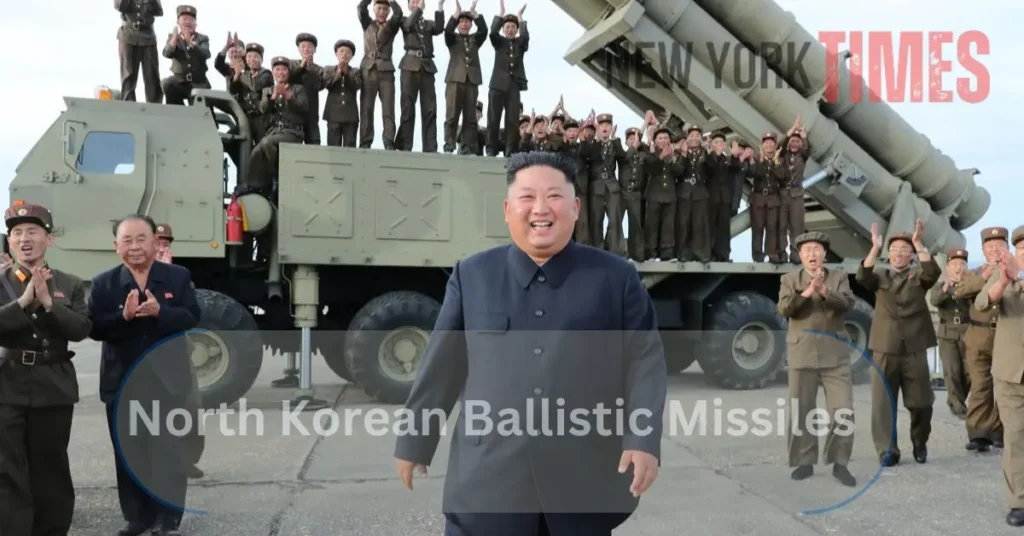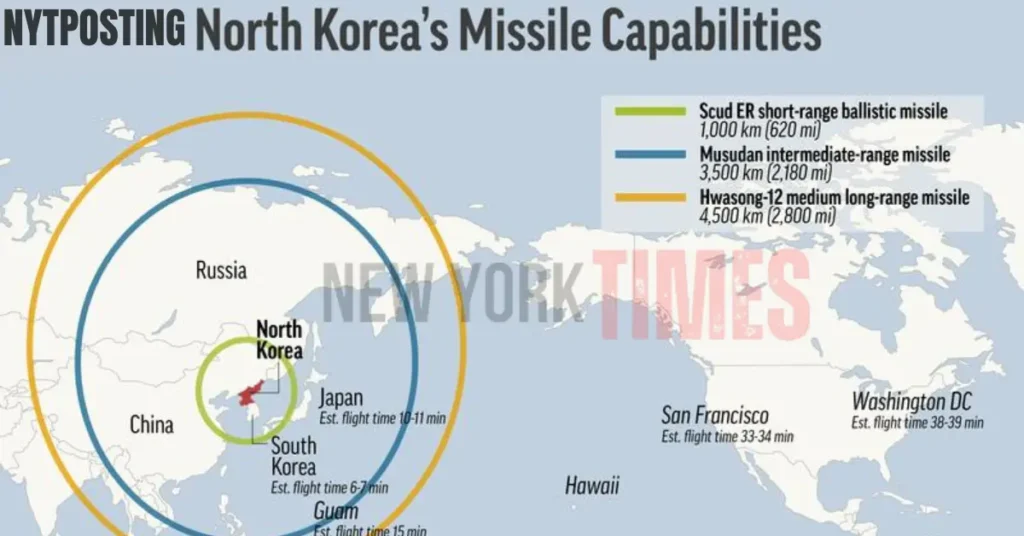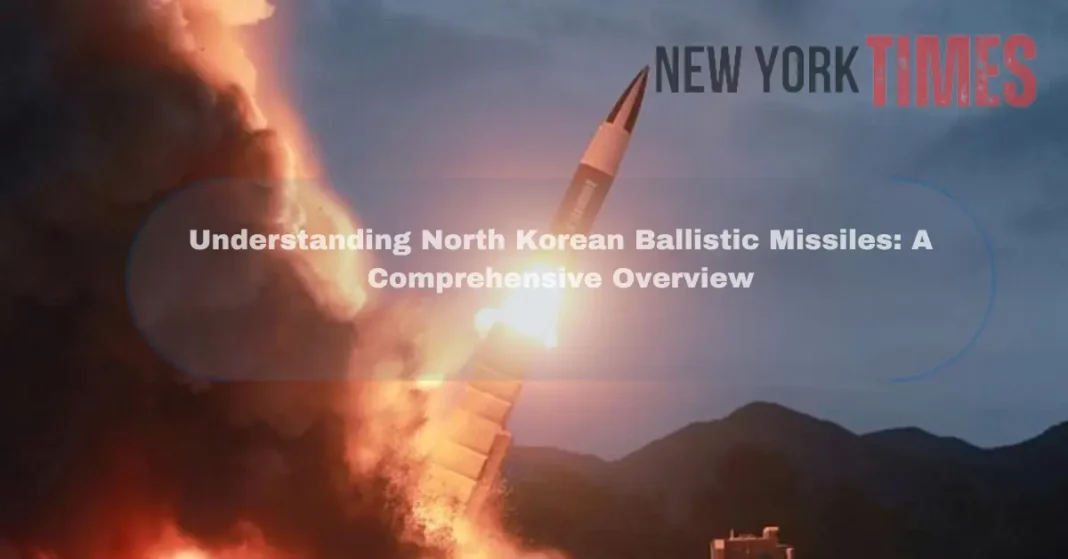North Korean ballistic missiles have always been the focus of international attention and worry. It is widely known that the Democratic People’s Republic of Korea (DPRK) as well as the title of North Korea, has pursued an active program of development of missiles, which has led to geopolitical tensions and raised concerns about security issues throughout the region and across the globe. This article will provide an in-depth review of North Korean ballistic missiles, their capabilities, and their impact on international relations.
Historical Context
The fascination in North Korea for ballistic missiles began in the 1970s. The Kim family under the leadership of Kim’s relatives Kim family has drastically enhanced its capabilities in missiles. It has conducted numerous tests that attracted the public’s interest and anger from the international community.
Types of North Korean Ballistic Missiles

Short-Range Missiles
Examples include Include Scud Series (Scud-A Scud, Scud – B, Scud – C) with different sizes.
They were created to target specific areas in the region, as they have been subjected to rigorous testing in the last few years.
Medium-Range Missiles
Rodong-1 Rodong-1 is a ballistic missile with an estimated range of 1,300 kilometers. It is a ballistic missile with a medium range capable of reaching out to the countries of its neighbors.
These missiles are a grave threat to the security of the region. They have also caused tensions, especially on the Korean Peninsula. Korean Peninsula.
Intermediate-Range Missiles
Musudan (Hwasong-10) Musudan (Hwasong-10) Musudan (Hwasong-10) Musudan (Hwasong-10) (Hwasong-10) is an intermediate-range ballistic missile range that can travel up to 3,000 kilometers and possibly get to U.S. military bases in the Pacific.
Intercontinental Ballistic Missiles (ICBMs)
North Korea has made significant advancements in the development of ICBMs which can be used to reach the continental United States. Hwasong-14 and Hwasong-14 as well as the Hwasong-15 are two examples of ICBMs that have been tested, which have demonstrated the capability of long-range.
Technological Advancements
North Korea’s missile program has benefited from advances in the field of solid fuel technology as well as mobile launch platforms and the development of reentry vehicles. These advances improve the resiliency and mobility of North Korean missiles, making them harder to combat.
International Response
The international community headed by the United Nations Security Council, has imposed sanctions against North Korea in response to its nuclear tests and missile launches. ambitions. The sanctions are designed to limit the nation’s ability to fund and develop its weapon programs. But their effectiveness is an issue of debate.
Security Implications
The advancement of North Korean ballistic missiles has increased regional and global security issues. Countries that share a border, including South Korea and Japan, are at risk as well as the long-range capabilities of ICBMs could pose risks to the wider international community.
Diplomatic Efforts
Diplomatic initiatives, such as talks and negotiations are ongoing to deal with North Korea’s missile programs and nuclear ambitions. The situation remains complicated there are periodic escalations as well as de-escalations that reflect the difficulty of negotiating a diplomatic solution to the problem.
International Diplomacy and Ongoing Challenges
Despite occasional diplomatic engagements, total denuclearization is still an unattainable goal. Summits that were historic with North Korean leader Kim Jong-un as well as leaders from countries such as South Korea and the United States and South Korea have drawn attention, however, tangible results have not been achieved. The complexities of negotiations, divergent interpretations of the commitments, and an absence of trust among North Korea and the international community have slowed the progress.

Humanitarian Concerns and Economic Impacts
The funds devoted to North Korea’s nuclear and missile programs have raised questions about the well-being of its citizens. The deployment of substantial technology and financial funds to military activities has been the subject of criticism, particularly when compared to the recent economic troubles in the country.
International sanctions, while focusing on the regime’s military ambitions also affect the wider economy and the civilian population. In terms of addressing the humane aspects of the crisis remains an issue, since the world community attempts to find an equilibrium between preventing weapon development while also alleviating hardships of North Korean people.
Regional Security Dynamics
There is a significant presence of North Korean ballistic missiles that significantly impact the security of the region. Countries that are neighbors constantly review their strategies for defense and debates about the possibility of deploying missile defense systems are gaining traction. A delicate power balance on the Korean Peninsula underscores the need for diplomatic solutions to solve security issues in a variety of areas.
Role of China and Russia
China and Russia as regional powers that have historical ties with North Korea, play crucial parts when it comes to international attempts to resolve the issue of missiles. Both have backed United Nations resolutions imposing sanctions on North Korea, but their influence extends far beyond diplomatic sanctions. Stabilizing the region while taking care of issues of security for all the parties involved remains a thorny diplomatic issue.
The Path Forward
As the world grapples with the complex issues that North Korea’s nuclear program a multifaceted approach is vital. The ongoing efforts of diplomatic diplomacy, along with a robust international collaboration, are essential for tackling the security implications and making real improvements.
Discussions on denuclearization must be based on the security of the region as well as economic considerations, and the health of people in the North Korean population. The way forward will require long-term participation from all parties in the process, highlighting the importance of transparent communication, trust-building measures as well as the development of innovative diplomatic options.
Conclusion
The problem concerning North Korean ballistic missiles remains a major issue for international relations. influencing regional security and impacting the stability of the world. Diplomatic efforts continue with the world watching in hopes of a resolution that addresses security issues and creates a secure and peaceful regional setting. The issues are huge however, with constant international cooperation, there is hope of a breakthrough diplomatically which could alter the future of the Korean Peninsula and contribute to an improved security environment.
North Korean ballistic missiles represent an important threat to security in the international arena and have the possibility of altering regional dynamics and threatening global stability. To deal with this issue, efforts need a combination of sanctions, diplomatic engagement as well as international collaboration. The situation is in flux and calls to be vigilant and continue diplomatic efforts to stop any further aggravation and to promote regional stability.
What are North Korean Ballistic Missiles?
North Korean ballistic missiles are missiles that can carry a warhead following the ballistic path. They are designed for use by North Korea for military purposes.
What is the reason for concern over North Korean Ballistic Missiles?
The international community is worried that North Korea’s ballistic missile program could pose a threat to the security of the region and the world. The creation of long-range missiles creates questions about the nation’s defense capabilities.
What types of ballistic missiles do North Korea have?
North Korea possesses a variety of ballistic missiles. These include intermediate-range, medium-range, and short-range as well as intercontinental ballistic missiles (ICBMs).
What is the variety of North Korean Ballistic Missiles?
The range is dependent on the kind of missile. Short-range missiles span distances that range from 100 km and intercontinental ballistic missiles (ICBMs) can cover hundreds of miles, including those in the continent of the United States.
How advanced is North Korea’s missile technology?
North Korea has made advancements in the field of missile technology, such as advancements in the technology of solid fuel mobile launch platforms and the development of vehicles for reentry which makes their missiles more difficult to defeat.
Do you know if North Korean Ballistic Missiles have been employed in conflict?
Although North Korea has conducted multiple missile tests, they haven’t been deployed in actual situations of conflict. However, the tests have exacerbated tensions within the region.
How will the world respond to North Korean Ballistic Missiles?
The international community in the form of the United Nations Security Council, has issued sanctions on North Korea in response to its nuclear and missile tests as well as missile activities. The aim is to stop the development of and funding for the weapons programs.
Diplomatic attempts are being made to solve the problem?
Diplomatic efforts are ongoing and include discussions between North Korea and various countries to address concerns regarding its nuclear and missile programs. However, reaching a complete resolution is a thorny task.
What are the implications of North Korean Ballistic Missile’s impact on security in the region?
There is a significant presence of North Korean ballistic missiles that significantly affect the security of the region. Countries that are neighbors constantly review their strategies for defense, and discussions regarding defense systems for missiles have become more prominent.
What are the best steps to take to deal with the problem regarding North Korean Ballistic Missiles?
A solution to this North Korean missile issue requires the use of economic sanctions as well as international collaboration. Multilateral efforts for denuclearization and building trust are essential.


